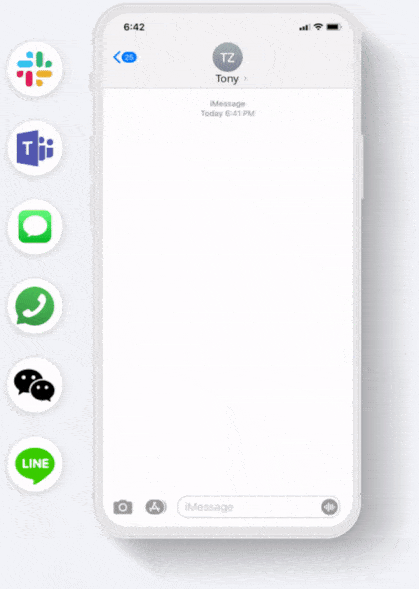Employers should plan well and establish the steps before implementing a training program. It is also necessary to determine what you want to teach and the learning outcomes to achieve. Additionally, you should consider making your content easily digestible and use several channels to deliver learning.
Employee training is highly essential and impacts the retention rates of your workforce. 20% of workers in the USA quit their job within 45 days, and you don’t want to be on that list.
In this blog, we will explore how to train employees and the best possible ways to do so. Additionally, you will get a handy checklist to follow and learn vital tips to ensure training success.
So, let’s start with some basic steps before moving on to advance training methods.
10 Ways to Train Employees Effectively
Are you wondering how to train employees?
Below are 10 ways to ensure your training program turns out to be successful:
1. Create a Training Plan
Every employee training needs careful planning. Involve all the stakeholders, including your managers to develop a strategic plan focusing on:
- Skills and processes your employees need to learn
- Allocate required resources
- Pairing your employees with a mentor
- Feedback and evaluation methods
2. Focus on Soft Skills
Employers often miss out on training on soft skills and focus only on technical skills. However, soft skills allow employees to work and manage their responsibilities efficiently. Therefore, train your employees on traits like:
- Leadership quality
- Problem-solving
- Conflict resolution
- Time management skills
- Creative thinking
- Open communication
3. Use Incremental Learning
Don’t overwhelm your employees with long hours of training or classes. You should progress in small steps and use an incremental approach for your training.
For example, your employees can learn a chapter, answer a few questions, and move to the next one. It improves the retention of information and allows proper time management.
4. Personalize Your Training
People learn in different styles. Therefore, your training program should be able to accommodate all the learning styles for your employees. Additionally, 58% of workers want to learn at their own pace.
Therefore, stay flexible and personalize your training for each employee.
5. Use Several Channels
We use a plethora of devices every day, from computers to phones to tablets. As a result, don’t restrict your employees to a single channel of learning. Aim to exploit all the channels your employees use, especially smartphones.
For example, employers can send videos to employees’ phones using Bites.
6. Encourage Collaborative Learning
We learn better when we can discuss and share our knowledge with others. As a result, encourage your employees to perform group learning activities for better learning outcomes.
However, your workforce doesn’t need to meet physically. You can use messaging apps, social media groups, and more to foster collaboration.
7. Leverage Training Videos
Videos can help your workforce learn faster and achieve optimum learning outcomes. It can make information easy to digest and improve understanding of complex topics. As a result, 74% of trainers rely on video learning for best results.
Employers can use Bites to create training videos and share them on mobile devices.
8. Test Your Employees’ Learning
It is essential to evaluate how well your employees learned. Therefore, set up a few questions after each chapter or topic. You can also use Bites to include a test after each video to assess how well your workforce retains information.
9. Appoint a Mentor
Your employees should be able to approach someone with their queries and questions. Therefore, appoint a mentor for each employee or a team. However, mentors may not need to meet the employees face-to-face.
You can use tools like Zoom or even messaging apps to facilitate discussions.
10. Review Your Program
Employers should gather feedback from employees about the training program and make necessary adjustments. You want to develop a program that suits everyone and achieves your learning objectives. So, listen to what your employees have to say for vital insights to improve your program.
Why Is Employee Training Vital for Any Employer
Training is important for existing employees to work productively. It can help them learn new skills and get aware of new business processes. Additionally, employee training is vital for a range of reasons:
- 94% of employees will work at the same company if the employer invests in learning. Therefore, training your employees can reduce employee turnover.
- Training can reduce workplace hazards and improve employee satisfaction. They are more likely to work hard to achieve your business objectives.
- Well-trained employees are more engaged in their work. This is good news as highly engaged workers result in 21% greater profitability.
- Employees can work more efficiently by receiving thorough training. They can also save time and avoid making mistakes due to a lack of awareness.
- Employee training can make the way for continuous innovation. No wonder 35% of senior HR staff views learning and development as a strategic priority.
- 68% of workers prefer to learn at work. As a result, employers can attract top talents by providing training programs to new hires.
Additionally, employee training is also important for new hires. It helps them get familiar with the organization, understand their role, and grasp their responsibilities.
Therefore, your training program should also contain a fitting employee onboarding strategy.
Best Checklist for Training Employees
Every company has unique learning needs. However, a common set of items can help you implement and guide your training program efficiently. You can create an employee training checklist after assessing your requirements and strike items as you progress to stay on track.
Below is a generic checklist for an employee training program you can follow for most industries. You can customize the checklist as per your needs, whether you’re in manufacturing, F&B, or retail.
Employee Training Checklist
- Determine your learning goals
- Decide what your employees need to learn
- Zero in on your preferred training delivery methods
- Set the duration and schedule of your training program
- Create a list of resources you will need to implement the training (including technologies)
- Work out your training budget
- Find a mentor or teacher
- Establish ways to assess learning outcomes
- Gather feedback to improve future training programs
You can add, delete, or edit items to the above checklist based on your training objectives.
Essential Tips to Train Your Employees
Employers are often worried about how to train employees. So, here are some valuable tips to stop worrying and train your staff like a pro:
- Assess the skills of your employees to understand where you stand.
- Let experienced employees help your existing workforce learn and grow.
- Vary your training methods to avoid employees getting bored or disinterested.
- Use visual elements like images, animations, and videos to make learning fun and engaging.
- Employers can use a learning management system (LMS) to implement and manage employee training programs.
- Allow breaks and time off so that the training doesn’t overwhelm your staff.
- Track the progress of each employee and collect their input to refine your training strategy.
Final Thoughts
Employers often worry about how to train employees. The right way is to start small and assess your learning objectives. Then you can create a plan and zero in on the delivery method. Additionally, use digital methods and interactive elements to improve retention and make learning fun. Also, gather feedback about your program and make continuous improvements.
























